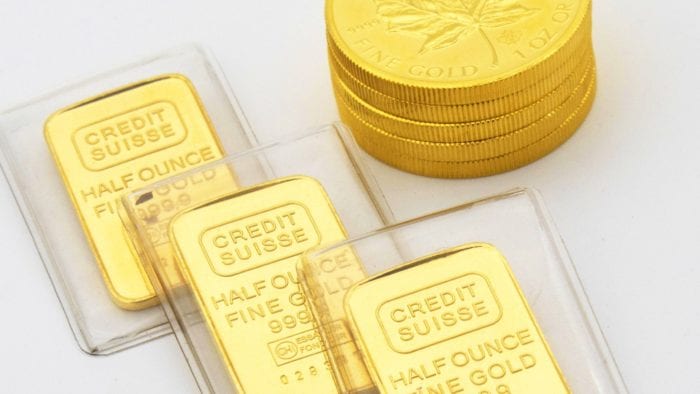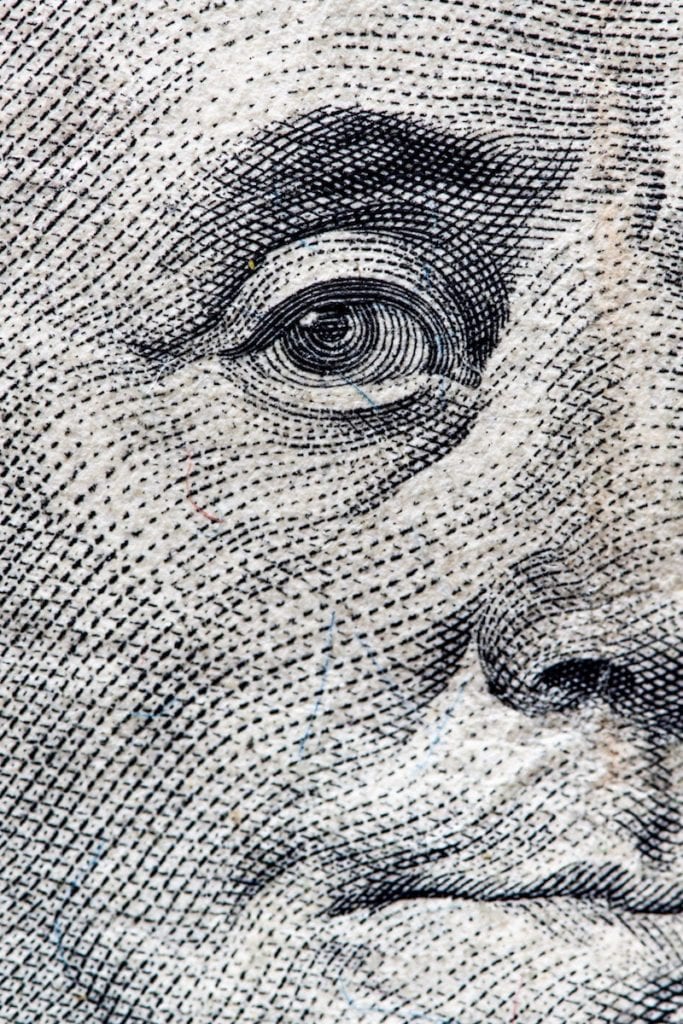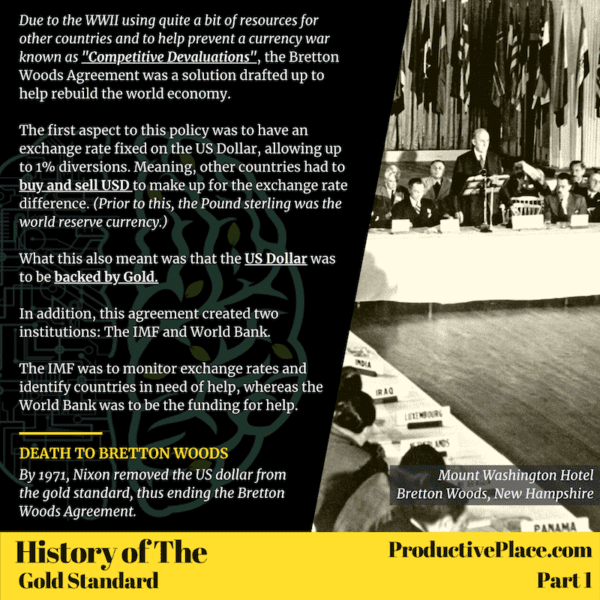The Gold standard was first implemented by the spread of gold coins among the population. After gold became accepted as currency, the need for a standard arose. The Gold standard is essentially assigning a set monetary unit to the value of a gold coin in circulation. We can compare this standard to the standard that guides banknotes. Let’s assume one gold coin was worth 100 silver coins. This means that every single gold coin could only be split into 100 silver coins, nothing more nothing less. This is also how paper currency works. Each banknote can be split into banknotes of lesser value. 100 dollars can be split into five 20 dollar notes and five 20 dollar notes have the same value as a single hundred dollar note.
Gold is a chemical element that becomes solid under standard conditions. The reason gold is so valuable is that it is a relatively rare element that also happens to be a precious metal of high economic value. Gold along with other precious metals used to be forms of currency and were as important as currency. Gold and silver were the most popular for coinage, jewelry as well as art. All these made the value of gold significantly higher than other precious metals hence the necessity of the gold standard.
The use of gold as currency can be traced back to 610-600BC in Asia Minor. This is the origin of the world’s oldest gold coin. The Roman and Greek empires also had pure gold coins they called “solidus” or later “bezant.” Moving on to the Middle ages, empires continued to create different currencies. Let’s take a look at the Byzantine empire, their gold currency was called the bezant and it was used in Europe as well as the Mediterranean. When the Byzantine Empire declined, European territories decided to employ the use of silver instead of gold as a currency. This later led to the development of the silver standards.
The modern gold specie standard was adopted formally for the first time in 1821 by Britain. It was adopted as a result of the introduction of the gold sovereign. The gold sovereign is a gold coin of the United Kingdom. It is worth one pound sterling. Other countries and colonies soon began to follow by making their coins from gold. The Gold specie standard was later adopted by The Province of Canada (a British colony in North America) in 1854, the United States of America and Germany in 1873. Australia and New Zealand also adopted the gold specie standard.
Unfortunately, the success of the gold specie standard would be short-lived. Forty years later in July 1914, the outbreak of the first world war ensured the declination and later the end of the gold specie standard. Gold was no longer the popular currency. Treasury notes were introduced and although some countries continued to use silver coins occasionally (pennies etc), precious metals were no longer used for coinage. In fact, coinage also rapidly declined with the rise of paper money.
“Gold is money, everything else is credit.”
– JP Morgan
It was not until 1925, that the British Empire revised the gold specie standard. In conjunction with South Africa and Australia, the gold specie standard finally ended and a new standard was introduced. Now that gold was no longer currency, the British Empire revealed the British Gold Standard Act 1925. This act introduced the gold bullion standard and ended the circulation of gold specie coins thereby ending the gold specie standard for good. The law no longer dealt with gold coins but gold bullion (gold bars) that contained a set amount of pure gold (12kg in weight).
The gold standard was the target of a lot of criticism. Some economists argue that the standard led to the prolonging of the great depression and a great deal of economic turmoil. The history of the gold standard is proof of how currency has evolved over time.








